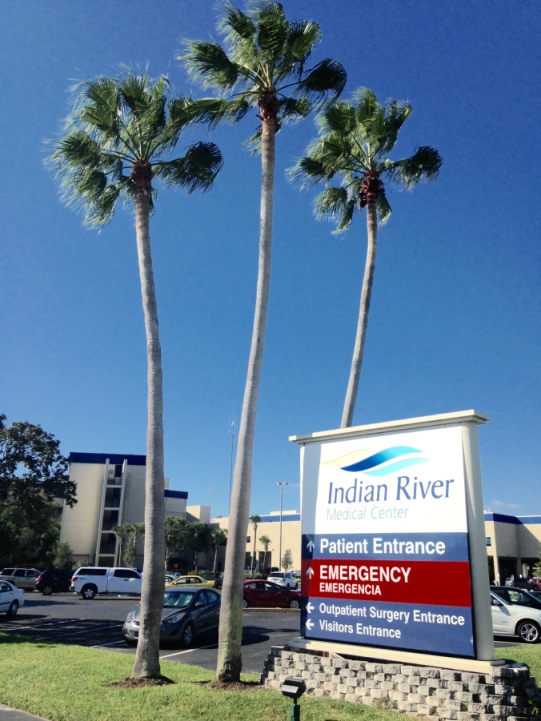
WE KNOW THAT A COLLABORATIVE COMMITTEE, CONSISTING OF MEMBERS OF THE INDIAN RIVER MEDICAL CENTER (IRMC) BOARD OF DIRECTORS, INDIAN RIVER COUNTY HOSPITAL DISTRICT (IRCHD) TRUSTEES AND BOARD MEMBERS OF THE IRMC FOUNDATION (IRMCF), RANKED THE IMPORTANCE OF STRATEGIC OBJECTIVES FOR IRMC. NO. 1 WAS PATIENT FIRST FOCUS. NO. 2 WAS TO MAINTAIN AND ENHANCE THE LONG TERM VIABILITY OF IRMC.
We know that Stroudwater, a Portland, Maine based consulting firm hired by IRCHD to perform an operating assessment of IRMC issued their findings in a June 15, 2017 report which developed a preliminary outline for an IRMC Strategic Capital Plan of $ 235 million through FY 2023, of which $50 million would presumably be funded by the IRCHF, leaving a short-fall of $ 185 Million.

We know that of the $ 235 million, $ 170 million would be allocated to a main campus renewal project, $ 50 million would be allocated to strategic investments and $ 15 million would be allocated to health information technology investments.
We know that, as per the Stroudwater report, “An additional $3.5M (1.5% of operating revenue) in annual operational improvement opportunities have been identified. When combined with other operating improvements and new payer contracts, these improvement opportunities are insufficient to address IRMC’s strategic and investment needs.”
As such, we know that “Projections indicate that even with an assumed $3.5M of annual operating improvement on top of improved commercial payer rates and $50M of philanthropy, IRMC would fall to a ‘junk’ credit rating – with a set of heightened associated operating risks – to fund needed strategic investments.”
We know that according to an August 22, 2017 press release from IRMS that: “Following a poor first quarter where Indian River Medical Center (IRMC) lost $4 million on weak admission levels and expenses impacted by Hurricane Matthew, IRMC has seen continued improvement in financial performance. Since January, IRMC has produced an excess of revenue over expenses of $2.9 million, reducing the year-to-date deficit to $1.1 million.”
We know that, according to George Andressi of TCPALM.COM on August 24, 2017, that IRMC’s July 2017 report, indicates IRMC has projected a $ 1 million profit in 2018 thanks to a variety of cost-savings measures and a recent increase in rates health insurance companies pay.” And that “the hospital’s profit margins affect its value, at a time when leaders are searching for a health care system to take over operations.”
We know that the IRCHD has hired Juniper Advisory, a small Chicago-based consulting firm to find a partner, preferably a non-profit partner, to invest the $ 185 million the consulting firm Stroudwater feels is necessary to fund IRMC ‘s Strategic Capital Plan through FY 2023.

We know that IRMC Board Member Dr. Hugh McCrystal has indicated that he feels it is very important to inform the community that there is no intention of selling the hospital and that all parties are looking to collaborate with a not-for- profit entity. “We are not looking to sell the hospital.”

Dr. Hugh McCrystal
We know that physician Val Zudans, a former trustee of IRCHD said: “What legitimate business will invest $ 185 million without control of the facility?”
We know that at a July 20, 2017 IRCHD Board of Trustees meeting, Trustees voted 6-1 to raise property taxes by roughly 15%. According to an article by Rusty Carter of 32963, “The board also approved a $ 2.2 million increase in its budget, which will rise to $ 15.3 million in 2018. Fully $ 1 million will be used to cover legal and consultant fees for the effort to find the hospital a partner.”
We know that IRMC plans to renovate more than 200 patient rooms, which will cost roughly $ 2 million.
With respect to Dr. McCrystal’s indication that all parties are looking to collaborate with a not-for- profit entity, we know that according to Florida law Title X1, 155.40, regarding the sale or lease of county, district, or municipal hospital, (subsection 11) “The governing board shall file a petition with the Secretary of Health Care Administration seeking approval of the proposed transaction at least 30 days after publication of the notice of the proposed transaction. Within 30 days after receiving the petition, the Secretary of Health Care Administration or his or her designee shall issue a final order approving or denying the proposed transaction…The order shall require the governing board to accept or reject the proposal for the sale or lease of the county, district, or municipal hospital or health care system based upon a determination that: (b) The proposed transaction does not unreasonably exclude a potential purchaser or lessee on the basis of being a for-profit or a not-for-profit Florida corporation or other form of business organization…(emphasis added.)
We know that according to the Indian River County Economic Development website, as of July 7, 2017 IRMC had 1,753 employees,
What we don’t know is who Juniper Advisory will find to partner with/invest in or acquire IRMC. Or if proposals from suitors, due in late October would result in an agreement drafted and signed by what appears to be Juniper’s self-imposed deadline of May 31, 2018.

According to the Florida Hospital Association 2017 Directory of Hospitals, there are 156 for-profit hospitals of which 16 are Rehabilitation and 18 are Psychiatric.
The primary owners are:
- Hospital Corporation of America: 48
- Community Health Systems: 17
- Tenant Healthcare Corp.: 11
- HealthSouth: 11 (all rehabilitation)
- Kindred Healthcare: 10
- Select Medical Group: 9
There are 123 not-for-profit hospitals, of which 12 are Psychiatric and six are rehabilitation.
An additional 44 hospitals are owned by Federal and Public government.
According to a December 28, 2016 report in Healthcare Finance reporting on “Healthcare Mergers and Acquisitions in 2016,” there were 78 outright hospital acquisitions and 15 mergers that resulted in a new entity being formed from the merger.

Our review of the report only found one transaction where an investment was made in a healthcare system that was not an acquisition or merger.
On May 19, 2016 as reported in CAPITAL FINANCE Welsh, Carson bought a $196 million stake in Innovate to helps convert the senior care firm to for-profit. According to the report, New York-based private equity firm Welsh, Carson, Anderson and Stowe signed on to provide financing to senior care company Innovage, which will allow them to expand their services and pivot from a nonprofit to a for-profit entity.
Funding will be achieved through the sale of Innovage assets, totaling $196 million, plus a potential $8 million earn out in 2018 — which is a contractual provision stating that Innovage will obtain additional future compensation based on the business achieving certain future financial goals.
So here again, as physician Val Zudans, a former trustee of IRCHD said: “What legitimate business will invest $ 185 million without control of the facility?”
In a related March 29, 2016 article by Susan Morse, associate editor of Healthcare Finance she wrote that: “Mergers and consolidations should be saving hospitals money from having benefits of scale, but a new report by PwC (Price Waterhouse Coopers) finds this isn’t the case.

Susan Morse
Health systems could save money by consolidating systems and processes, especially on the clinical side, according to the PwC report published March 15.
Costs could be reduced by 15 to 30 percent, said two of the authors interviewed, Anil Kaul and K.R. Prabha, a principal and director, respectively, at PwC.
System mergers are often touted as a way to increase quality and reduce costs, but what the authors found is that the deals are most often done to gain market share and wield bargaining power with health plans.
‘When you look at the reason for the merger, it’s less about reducing cost and more of a land grab for market share,’ Kaul said, ‘to get more negotiating leverage with the insurance company. … Some acquisitions are not about reducing costs, they’re more about filling the portfolio.’
For the study, the authors analyzed 5,600 individual facilities and 525 health systems using data from Centers for Medicare and Medicaid Services. They didn’t give information on specific systems, but focused on the statistics, they said.
They found that for individual facilities, larger hospitals do have a lower cost per encounter than smaller hospitals.
However, for health systems with multiple facilities, the report found no relationship between size and cost.
‘Bigger companies are not yet able to convert their size into operating efficiencies,’ the authors said in the report.
Instead of having an integrated organization, the merged health systems are often still run as individual hospitals, they said.
This view starts with the top executives, according to Kaul.
‘A CEO of a hospital owns his or her own kingdom,’ Kaul said. ‘They think of other hospitals as competitors, even if they’re part of the same system.’
Prabha said two hospitals within a 10-mile radius of each other are often serving the same population, splitting the number of surgeries rather than pooling their resources.
Also, when health systems look at saving money, they generally start with administration and the supply chain, they said. A centralized human resources, finance and IT department are obvious choices, Kaul said. There’s also savings in having an integrated revenue cycle.
Yet the real savings could come from the clinical side, as that’s where the majority of money is spent, Prabha said.
An estimated 70 to 75 percent of the spend is on the clinical part of it, she said.
To start, the authors suggest hospitals define those services which should remain local to the individual facility.
Secondly, while top executives must be on board, change must have physician leadership, they said.”

Beth Kutscher, reporting in Modern Healthcare, says that merger and acquisition activity will probably stay strong in 2016. Now it’s 2017, soon to be 2018.
Wolves of Wall Street circling.😱😎
LikeLike